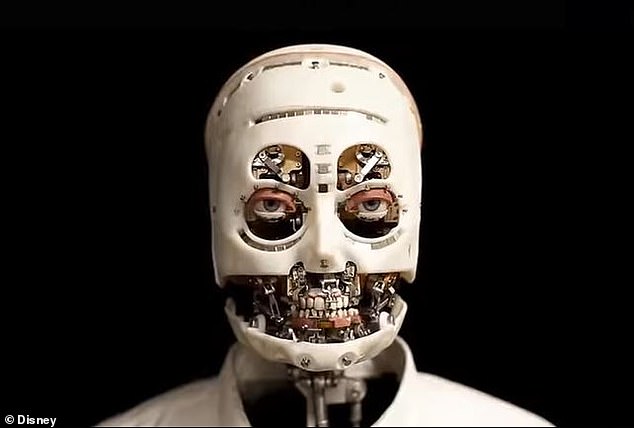Disney showed a creepy robot with a human look and facial expression
Disney representatives demonstrated a creepy, skinless robot with realistic eyes and teeth that they say can hold people's gaze and mimic demeanor - such devices could help develop animatronics indistinguishable from humans.
Representatives of the company presented a humanoid animatronic bust without skin with movable eyes, eyelids and eyebrows that create a human look.
Disney Imagineers is still working to improve systems, but believes they have found a method that turns metal machines into human-like robots.
The robot has a chest-mounted sensor that uses motion detection to activate a series of motors that control interactions with other people.
Disney Engineers have published a study titled Realistic and Interactive Robot Eyes, in which they write: “We present a shared architecture that aims not only to create eye interaction from a technological perspective, but also through the lens of character animation. where the accuracy and believability of movement is paramount; that is, we strive to create an interaction that demonstrates the illusion of life. ”
The robot has 19 degrees of freedom, but only uses the neck, eyes, eyelids and eyebrows - all controlled by proprietary software running in real time at 100Hz.
"The attention mechanism generates a 'curiosity score' assigned to this person, indicating their importance /significance, as well as how important it is for the robot character to respond to them," the study says.
"The way curiosity is calculated in our current system is pretty simplistic based on the location and speed of the hands and nose," wrote Imagineers.
Another layer, called the Behavior Selection Engine, is responsible for controlling the behavior of the robot, including reading, viewing, enabling and confirming.
“By layering simple behaviors, we can generate complex responses to environmental stimuli,” the study says.
“This architecture is highly extensible and can be used to create increasingly complex animatronic gaze behaviors as well as other interactive shows. We see this work as an attempt to climb out of a supernatural valley through the imposition of interactive kinematic models of behavior and sensorimotor response. ”
